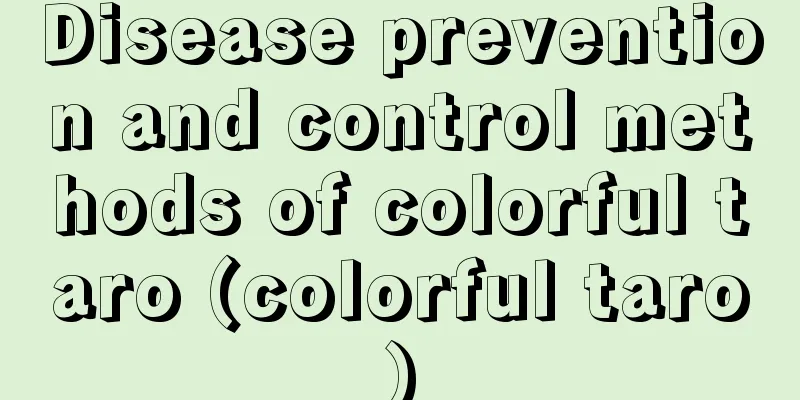Disease prevention and control methods of colorful taro (colorful taro)

Colorful taro dry rotSymptomsDry rot, also known as wilt, is a common disease of bulbous plants. It mainly harms the bulbs, and also harms the leaves, flowers and roots to a certain extent. Water-soaked reddish-brown spots will appear on the surface of the bulbs of the infected plants, gradually expanding to form round or irregular shapes, and the bulbs will gradually rot. When the disease is severe, the entire bulb will turn dark brown and dry rot. During the growth period of colorful taro, it is rarely infected with dry rot, and it is usually infected due to improper storage. Prevention and treatment methodsBefore storing the bulbs, they must be selected and some weak and diseased bulbs must be thrown away to avoid infection of other bulbs during storage. During storage, handle with care to minimize wounds. Ensure that the storage environment is well ventilated, disinfect before storage, and control the storage temperature at 1~4 ℃. Check regularly and remove rotten bulbs in time. Taro leaf spotSymptomsLeaf spot is one of the common diseases of foliage plants. It occurs everywhere, generally concentrated in spring and autumn. Leaf spot disease mainly infects leaves, petioles and stems. Circular spots will appear on the leaves, gradually expanding to form irregular spots and producing ring patterns. The color will also change from reddish brown to dark brown, with gray-brown in the center. Prevention and treatment methodsIf diseased plants are found, remove them promptly to avoid infection of other plants. Strengthen maintenance, pay attention to timely ventilation, and do not water directly on the leaves. Start spraying pesticides from the early stage of the disease to prevent the disease from spreading. Commonly used agents include 1000 times of 50% thiophanate, 500 times of 70% mancozeb, 400-600 times of 80% mancozeb, 500 times of 50% captan, etc. Pay attention to choosing two agents to use alternately when spraying to avoid drug resistance in bacteria. |
<<: Diseases and prevention methods of Aspidistra
>>: Michelia pest control methods
Recommend
The difference between Hainan Syzygium and Syzygium
1. Leaf Difference The leaves of Hainan Syzygium ...
Why can't we grow camellia in pots with small seedlings and large pots?
Hazard 1: Poor pot edge properties. When you chan...
The difference between Hanlan and Chunlan
1. Leaf Difference The leaves of the cold orchid ...
How to grow Cineraria well
1. Proper watering It is also called melon leaf l...
What is the reason for Clivia root rot
1. Too much watering Clivia does not require a lo...
The Flower Language of Gardenia
1. Joy Gardenia blooms in summer. People feel lif...
What flowers are suitable for growing in Cangzhou? What are the city flowers and trees?
1. Climate characteristics of Cangzhou Cangzhou h...
What to do if the leaves of the money tree droop
1. Causes and measures 1. Root rot Many times lea...
What to do if the roots of Kalanchoe rot
one. resection After removing the plant from the ...
How to propagate konjac rhizomes, corm cuttings, and sowing propagation methods
Konjac propagation method The propagation methods...
The difference between Silver Princess Waxwood and Golden Edge Boxwood
1. Difference of blades The leaves of the silver ...
Maintenance methods and precautions of small-leaf gardenia
How to care for small-leaf gardenia humidity Adeq...
How often should you water your pumpkin?
How often should you water your pumpkin? The pump...
Can Chlorophytum comosum be eaten?
Specific methods of eating Chlorophytum comosum: ...
Is it good to grow green radish at home?
1. Purify the air Because this plant can absorb h...









